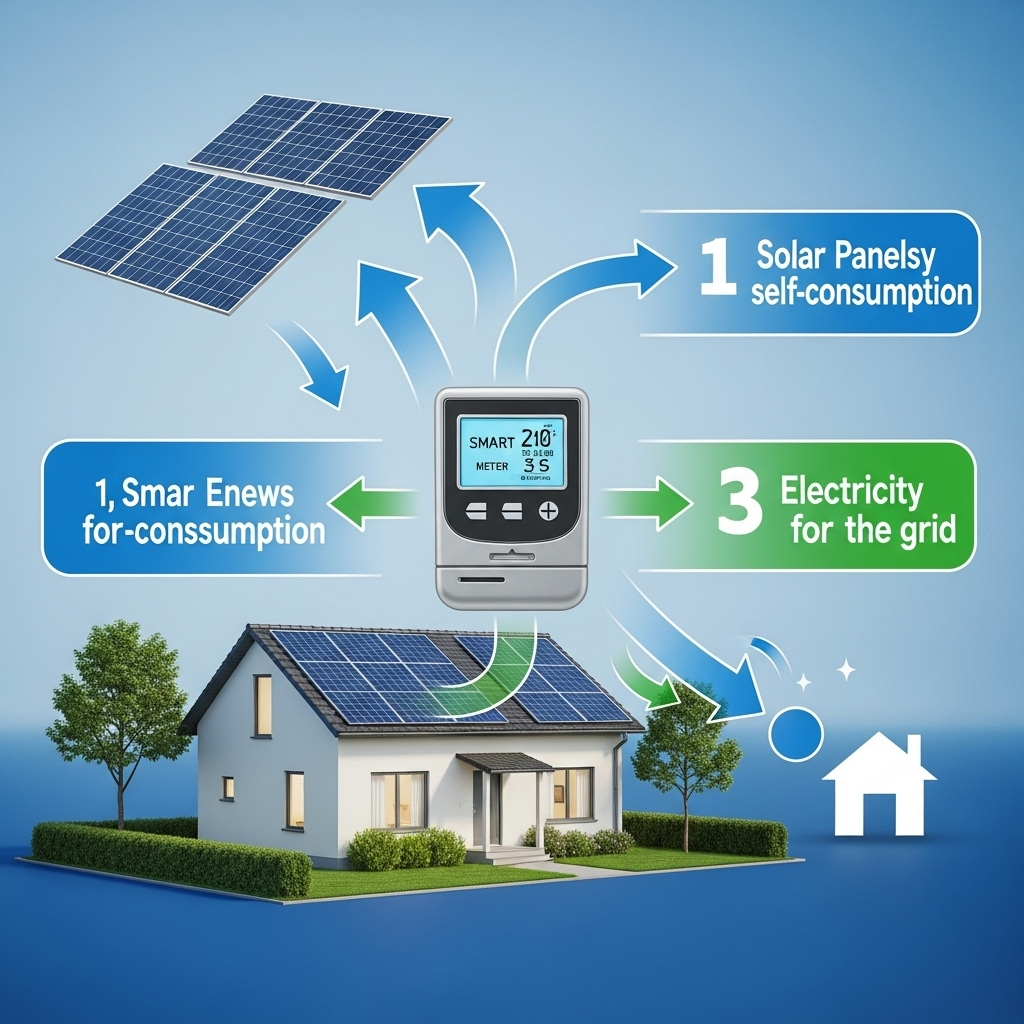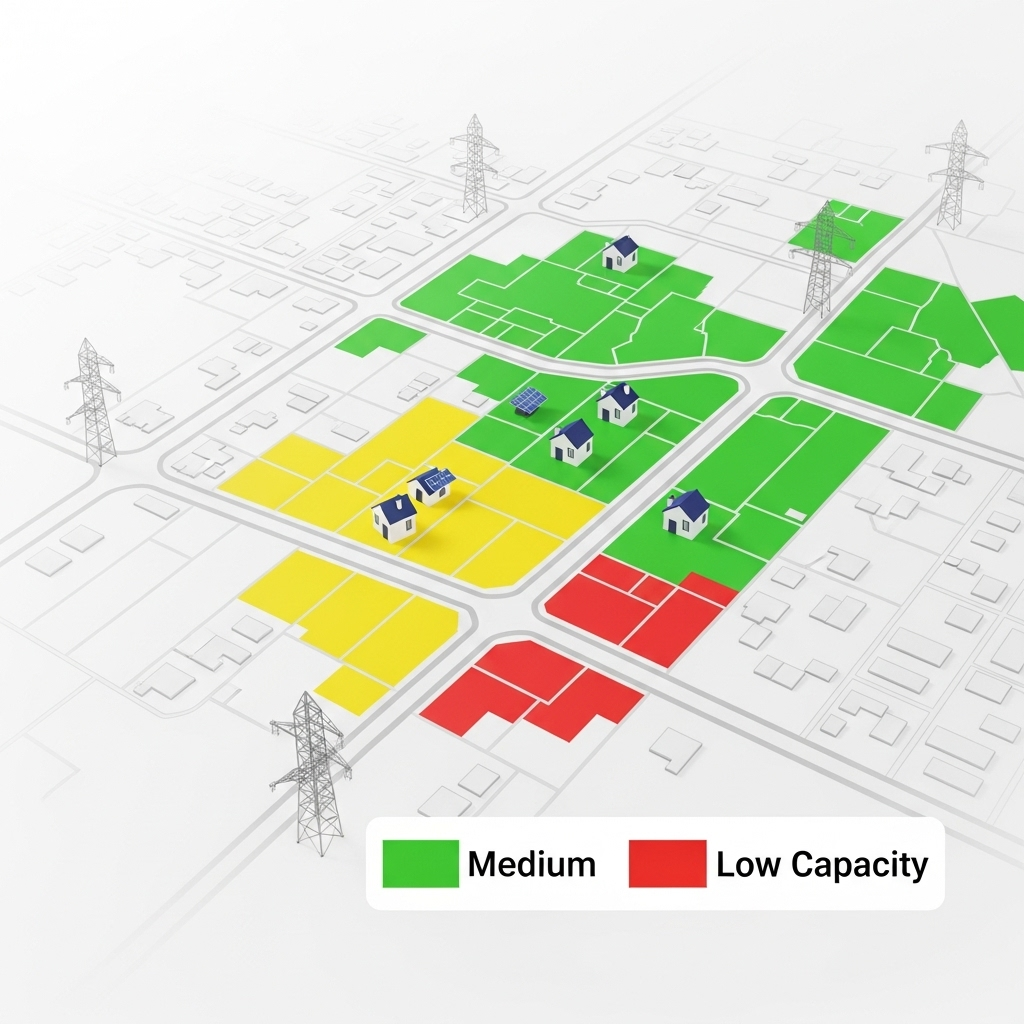You have selected your solar panels, chosen a high-performance inverter, and are ready to achieve energy independence. But one critical step stands between your new PV system and the grid: the interconnection process. This stage, particularly the initial screening, can become a source of frustrating and costly delays. A failed screen can push your project timeline back by weeks or even months.
Understanding this process is the key to a smooth grid connection. Utilities use interconnection screens as a first line of defense to maintain grid stability. By preparing your application to meet these technical checks, you can significantly increase your chances of a swift approval. This article provides a clear roadmap for navigating these screens, avoiding common pitfalls, and getting your system connected without unnecessary hold-ups.
What Are PV Interconnection Screens?
Think of interconnection screens as a technical triage for your PV system application. Utilities use this automated or simplified review to quickly sort projects into two categories: those that can connect to the grid with minimal impact and those that require a more detailed engineering study.
The Gatekeepers of Grid Stability
The primary purpose of these screens is to safeguard the local distribution network. As more distributed energy resources (DERs) like solar PV connect to the grid, they can affect voltage, power flow, and the operation of safety equipment. The screening process is designed to flag any project that might pose a risk to the grid's reliability or power quality. According to a report on System Integration of Renewables by the International Energy Agency, many of these initial screening methods were developed when solar penetration was low and are now being updated to handle the growing number of connections.
Key Technical Checks Involved
While specific criteria vary between utilities, most interconnection screens evaluate a few core technical aspects of your proposed system. Your application will be checked against these thresholds:
- System Size vs. Circuit Load: A common rule of thumb is the '15% rule,' where a PV system's capacity should not exceed 15% of the peak load on its local circuit. If it does, it often triggers a more detailed review.
- Voltage Impact: The screen assesses whether your system could cause voltage on the line to rise above or fall below acceptable limits. This is a common concern on long rural feeders with high solar penetration.
- Reverse Power Flow: The utility checks if the power your system exports could overload local equipment like transformers, which were traditionally designed for one-way power flow.
- Circuit Protection: The screen ensures your system will not interfere with the utility's protective devices like fuses and reclosers, which are designed to isolate faults and prevent outages.
Common Reasons for Failing Interconnection Screens
A failed screen is usually not a rejection but a signal that your project needs a closer look. Understanding why projects get flagged is the first step toward avoiding it.
Exceeding Simplified Thresholds
The most frequent reason for failing an initial screen is simply size. If your PV system's nameplate capacity is larger than the utility's pre-defined limit for a simplified review, it will automatically be flagged for a supplemental study. This doesn't mean the project is unviable, only that its impact cannot be assessed with a simple checklist.
Voltage and Power Quality Concerns
High concentrations of solar panels on a single circuit can cause over-voltage, especially on sunny, cool days when solar production is high but local energy demand is low. The utility's screening software models this effect. If your project is predicted to push the voltage outside of the required range (e.g., ANSI C84.1), it will be flagged for further analysis to determine if mitigation is needed.
Incomplete or Inaccurate Application Data
This is an easily avoidable yet common mistake. An application with missing equipment specifications, incorrect inverter model numbers, or a flawed single-line diagram will almost certainly be delayed. Utilities require precise data to run their screening models. Any ambiguity or error forces them to pause the process and request clarification, adding unnecessary time to your project.
Strategies for a Smoother Screening Process
You can proactively shape your project and application to pass the initial screening. A little diligence and smart technology choices can make all the difference.
Pre-Application Diligence and Research
Before you even submit your application, do your homework. Many utilities now provide tools that offer valuable insights. One of the most powerful tools is the hosting capacity map. These maps show which parts of the grid can accommodate new solar generation without requiring significant upgrades. By identifying a favorable location from the start, you can avoid circuits that are already saturated.
Leveraging Modern Technology
Today's solar and storage technology offers sophisticated features that can directly address the concerns of interconnection screens.
| Technology | How It Helps Pass Screens | Best For |
|---|---|---|
| Smart Inverters | Provide grid support functions like voltage regulation (Volt-VAR) and power factor correction, actively mitigating potential impacts. | All new PV installations, especially in areas with high solar penetration. |
| Energy Storage Systems | Store excess solar energy instead of exporting it to the grid, allowing for export control and peak shaving. | Maximizing self-consumption and connecting larger PV systems on constrained circuits. |
| Zero-Export Systems | Configure the system to prevent any power from being exported to the grid, eliminating reverse power flow concerns entirely. | Properties on highly constrained feeders where any export is problematic. |
Pairing your PV system with a battery is particularly effective. You can control the system's output, storing excess energy generated during midday and using it later or exporting it slowly during evening peak demand. This controlled export dramatically reduces the system's impact on the grid. To implement this effectively, you need to understand your system's capabilities. A comprehensive guide on solar storage performance can help you evaluate and configure your battery system to meet specific export limits, a key factor in passing interconnection reviews.
The Power of Operating Schedules
An emerging best practice is the use of operating schedules for solar-plus-storage systems. As highlighted in the BATRIES toolkit developed with support from the U.S. Department of Energy, some states now allow developers to submit a defined operating plan. Instead of evaluating the system's maximum theoretical impact, the utility assesses its impact based on this controlled, predictable schedule. This approach gives utilities confidence in the system's behavior and can allow for the approval of projects that might have otherwise required expensive grid upgrades.
Navigating the Process After the Initial Screen
If your project is flagged for a deeper review, don't panic. This is a standard part of the process for larger or more complex systems.
Understanding the Supplemental Review
A supplemental review involves a detailed engineering study. Utilities may use advanced methods like Quasi-Static Time-Series (QSTS) analysis. This modeling uses detailed 24-hour load and solar generation profiles to get a much more accurate picture of the system's impact on the grid throughout the day. While these studies are thorough, they can take several days or weeks to complete.
Cost-Sharing and Grid Upgrades
If the study concludes that grid upgrades are necessary to accommodate your project, the utility will provide a cost estimate. Historically, the first project to trigger the need for an upgrade was often responsible for the entire cost. However, recent reforms are changing this. As noted in the IEA's Renewables 2024 report, regulatory bodies like the U.S. Federal Energy Regulatory Commission (FERC) are implementing rules to facilitate cost-sharing among multiple projects that benefit from the same upgrade, making the process more equitable and efficient.
A Final Checklist for Your Application
To ensure your PV interconnection application moves as quickly as possible, take these final steps. This checklist summarizes the key actions for a successful submission:
- Consult the utility's hosting capacity map to assess your proposed location.
- Double-check that all equipment specifications on your application are complete and accurate.
- Specify a smart inverter with grid-support functions enabled.
- Include an energy storage system with an export-limiting or scheduled operating plan.
- Confirm if your utility accepts formal operating schedules for solar-plus-storage systems.
- Review your entire application package for completeness before submission.
By treating the interconnection application with the same diligence as your system design, you can avoid common delays and start benefiting from your solar investment sooner.
Disclaimer: This article is for informational purposes only and does not constitute legal or financial advice. Interconnection rules and utility requirements vary by location. Always consult with a qualified solar installer and your local utility for specific guidance.
Frequently Asked Questions (FAQ)
What is the '15% rule' in PV interconnection?
The '15% rule' is a common screening threshold used by many utilities. It generally states that a PV system may pass an initial, simplified screen if its nameplate capacity is less than 15% of the minimum daytime load on its local distribution circuit. It is a rule of thumb to quickly identify small projects with a low probability of causing grid issues. Projects exceeding this threshold typically require a more detailed study.
Can adding a battery help my PV system pass interconnection screens?
Yes, significantly. A battery energy storage system allows you to control the power your system exports to the grid. By storing excess solar energy instead of sending it to the grid all at once, you can limit your export to a level that avoids violating the utility's screening thresholds. This practice, known as export limiting or peak shaving, directly addresses concerns about voltage rise and reverse power flow, making it a powerful tool for passing screens, especially on constrained circuits.
What happens if my project is flagged for a detailed study?
If your project fails the initial screen, it proceeds to a supplemental or detailed study. This is not a rejection. The utility's engineers will perform a more in-depth analysis, often using sophisticated modeling software to simulate the system's impact on the grid under various conditions. The study will determine if any grid upgrades (like a larger transformer) are needed to safely connect your system and will provide an estimate for the costs and timeline involved.
How long does the interconnection screening process take?
The timeline can vary dramatically. For a simple residential project that meets all automated screening criteria, approval can be granted in hours or days. However, if a project is flagged for a detailed impact study, the process can extend to several weeks or, in some cases, months. The duration depends on the complexity of the study, the utility's workload, and the need for potential grid upgrade designs.





Leave a comment
All comments are moderated before being published.
This site is protected by hCaptcha and the hCaptcha Privacy Policy and Terms of Service apply.